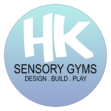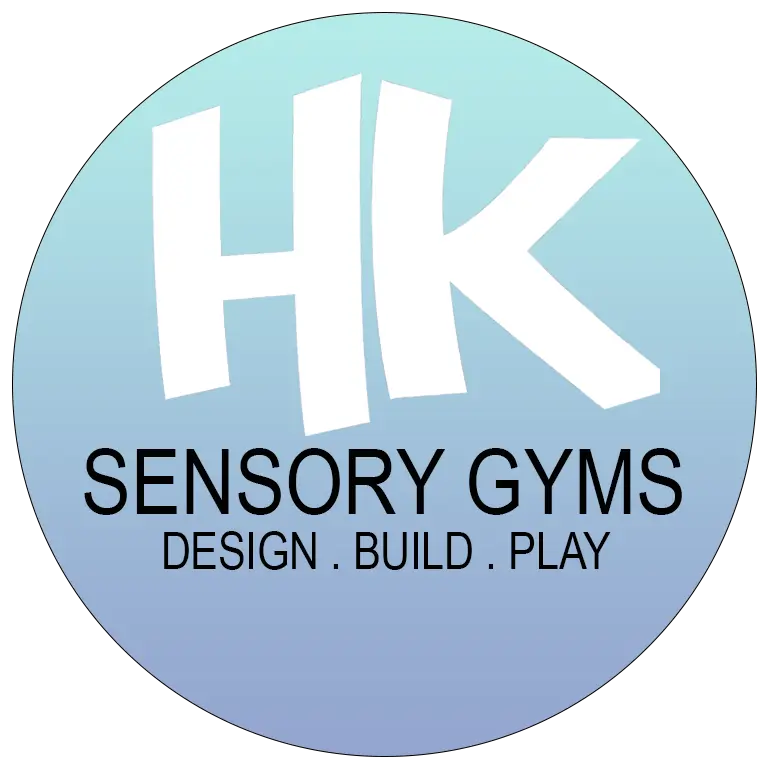Within pediatric occupational therapy, sensory gyms emerge as pivotal spaces designed to facilitate the development of essential sensory processing skills crucial for daily functioning. These specialized environments are meticulously crafted to offer a safe and stimulating setting, hosting a variety of exercises tailored to address the unique sensory integration challenges faced by children.

In these gyms, swings play a foundational role, providing vestibular input through linear swinging motions that regulate the vestibular system, fostering improvements in balance, spatial orientation, and coordination. Climbing structures, another integral component, offer proprioceptive and vestibular input, enhancing muscle strength, coordination, and spatial perception. Sensory boards and walls within these spaces feature tactile, visual, and auditory stimuli, promoting exploration and interaction to stimulate sensory receptors and refine processing abilities. Ball pits and crash pads contribute deep pressure input, benefiting proprioception and aiding in sensory modulation.
The exercises within sensory gyms are carefully curated to unlock a range of developmental benefits. Swinging exercises, whether linear or circular, stimulate the vestibular system, leading to enhancements in balance, coordination, spatial awareness, and sensory regulation. Climbing exercises challenge gross motor skills, fostering strength, coordination, and spatial perception while providing proprioceptive input. Sensory board/wall activities involve tactile exploration, visual stimulation, and auditory experiences, desensitizing sensitivities and improving sensory discrimination. Ball pit and crash pad activities, involving jumping or diving, provide deep pressure input, assisting in calming overactive sensory systems and enhancing body awareness.
The holistic impact of these exercises extends across sensory integration, self-regulation, improved motor skills, enhanced social interaction, and emotional regulation. By fostering a better understanding and processing of sensations, these exercises contribute to the integration of sensory information. Additionally, they assist children in regulating their responses to stimuli, resulting in improved focus and attention. Engaging in various activities within sensory gyms enhances both gross and fine motor skills, aiding in coordination, balance, and strength. Group activities within these environments foster social skills, cooperation, and communication among children. Furthermore, the sensory input provided aids in calming overstimulated systems and energizing under-stimulated ones, contributing to improved emotional regulation.
Transitioning to rock walls and climbing activities within sensory gyms adds a vertical dimension to therapeutic interventions. Rock climbing engages muscles and joints, providing intense proprioceptive input and contributing to improved body awareness. The activity requires both upper and lower body strength, refining fine and gross motor skills, coordination, balance, and spatial awareness. Negotiating a rock wall challenges visual, tactile, and proprioceptive systems simultaneously, promoting the integration of sensory information. Climbing activities also involve strategizing and problem-solving, fostering critical thinking skills and decision-making. For some children, climbing serves as a means of self-regulation, assisting in calming overstimulated sensory systems.
These activities foster enhanced confidence and self-esteem, as successfully navigating a rock wall fosters a sense of achievement. Improved coordination and balance result from the varied movements involved in climbing activities, challenging children to coordinate their movements effectively. Social interaction becomes integral during rock climbing, involving teamwork, peer encouragement, and communication. The combination of physical effort, sensory input, and focus required during climbing activities aids in regulating sensory processing difficulties, contributing to sensory modulation. Additionally, climbing serves as a full-body workout, promoting cardiovascular health, strength, and flexibility. Negotiating challenges on a rock wall encourages children to assess risks, make decisions, and build resilience.
Descending into the domain of slides within sensory gyms unveils a unique blend of sensory input, physical development, and social interaction. Sliding down a slide provides vestibular input, stimulating the inner ear’s vestibular system and contributing to improved balance, spatial orientation, and movement regulation. The sliding activity engages multiple senses, including sight, touch, and proprioception, as children navigate the tactile sensation of the slide’s surface and visually assess the height and trajectory. Ascending stairs or climbing to reach the top of the slide requires coordination, balance, and motor planning, contributing to improved body awareness and motor skills. The sensation of sliding, especially at varying speeds or angles, can assist in sensory modulation, providing sensory input that can either calm or stimulate a child’s nervous system. Slides also encourage social play and interaction, fostering turn-taking, cooperation, and sharing among children.
Sliding offers a unique sensory experience, allowing children to explore different tactile sensations and body movements, contributing to sensory processing and modulation. Climbing stairs or ladders to access the slide enhances gross motor skills, strength, and coordination. Sliding itself involves balance and coordination, contributing to overall physical development. The repetitive and predictable nature of sliding can have a calming effect for some children, aiding in emotional regulation by providing a comforting sensory experience. Slides often serve as focal points for imaginative and symbolic play, where children create scenarios, role-play, and engage in pretend play, fostering creativity and cognitive development.
In conclusion, sensory gyms stand as integral tools in pediatric occupational therapy, offering a structured and diverse range of exercises tailored to individual sensory needs. From swings and climbing structures to slides, each element contributes to a holistic developmental experience. These activities not only promote sensory integration but also enhance motor skills, emotional regulation, and social interaction. Sensory gyms, by providing a controlled environment for exploration and engagement, play a crucial role in shaping the overall well-being and development of children with sensory processing challenges.

